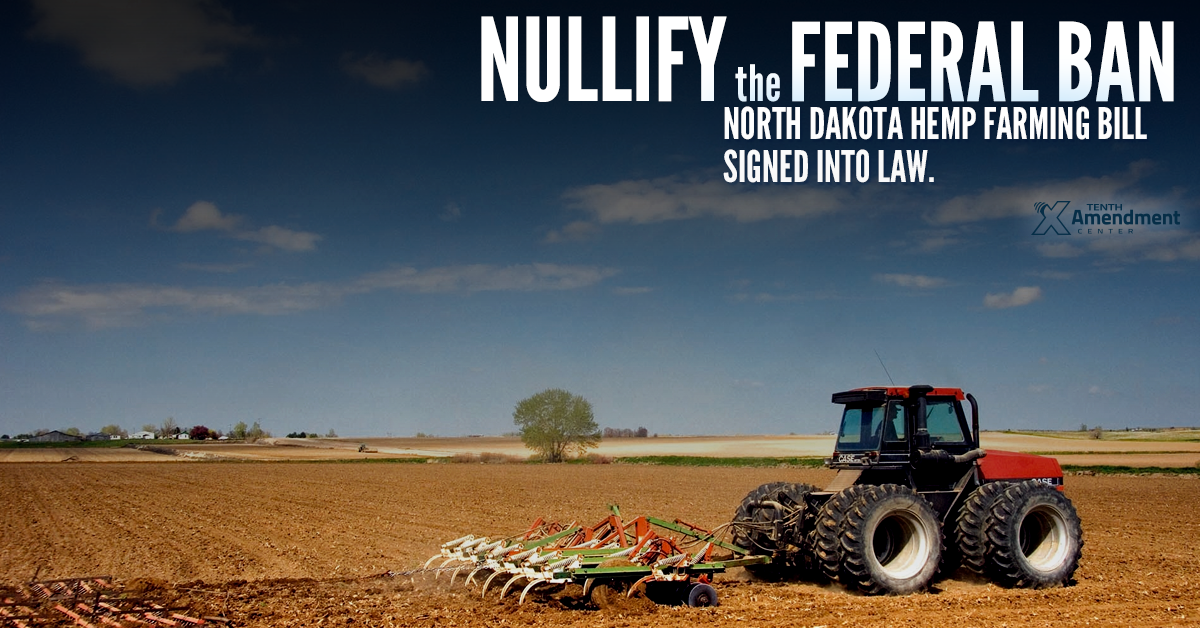
It is no small thing that industrial hemp will be a new crop growing in this entire region soon.
North Dakota will start its pilot project this spring, but Montana is not far behind, and Minnesota is considering starting an industrial hemp project as well.
We owe the North Dakota Department of Agriculture a ‘shout-out’ because through different ag commissioners, it has stuck with industrial hemp.
Another shout-out should go to Burton Johnson at North Dakota State University for his extensive research and certainly, Bryan Hanson at NDSU’s Langdon Research Extension Center, for seeding industrial hemp plots, harvesting, and evaluating its yield potential and other research results for farmers.
To us, that means that keeping agriculture number one and supporting our producers with new ways to be profitable really is important – and that means a lot to all of us involved with agriculture.
A sign made in 2007, when the North Dakota Department of Agriculture was issuing its first state industrial hemp licenses, said, “Let U.S. farmers grow industrial hemp.”
At that time, there wasn’t any industrial hemp farming, in spite of the significant profit potential for the crop and the fact that the uses of industrial hemp were huge.
Now industrial hemp is catching on and growing by leaps and bounds across the U.S.
Four North Dakota farmers, under the North Dakota Department of Agriculture’s pilot project, will start growing the seed this spring on their own farms, being the first to take the leap.
We don’t know if it was on purpose, but these four are situated in different regions of the state: southwestern; southeastern; and northeastern North Dakota.
Thanks to them, all the ‘kinks’ of growing industrial hemp can be worked out – or at least the problems of growing the crop can be exposed – so researchers can work on them.
While many say hemp doesn’t need pesticide or fungicide, even herbicide, these four farmers will find out for sure for the rest of us.
One person said on Farm & Ranch Guide’s Facebook page, “What is the big deal? Hemp was grown here during WWII.”
We would argue it is a big deal.
It is a big deal to producers who have needed another good rotational crop and to producers who saw low commodity prices last year.
A new crop like industrial hemp has all kinds of economic possibilities and that’s not a fairy tale.
Canadian farmers have sold the product all over the world for use as both grain and fiber, and Canada’s number one consumer of its industrial hemp products? – the U.S.
Now, we can start to be our own domestic provider of industrial hemp.
The oil extracted from industrial hemp seed has all kinds of uses in health products, and almost every part of the plant can be used.
There is hempcrete, an amazing insulation, among other products made from it. The strong fiber makes strong rope, clothing, twine, even plain old paper that can be recycled, and of course, is a biofuel.
Let’s hope the price for industrial hemp seed remains reasonable, and let’s hope elevators and processors will work with producers so there really will be a profit made.
Thanks to North Dakota Ag Commissioner Doug Goehring for working with industrial hemp processors on behalf of our producers.
Thanks to the producers who stepped forward to be part of the pilot project, and thanks to Rachel Seifert-Spilde, at the North Dakota Department of Ag, for all her research and work.
Industrial hemp is destined to be a really good rotational crop that fits with other crops, whether producers are wheat and barley growers or soybean and corn producers.
Yes. Let’s let farmers grow industrial hemp.
No comments:
Post a Comment